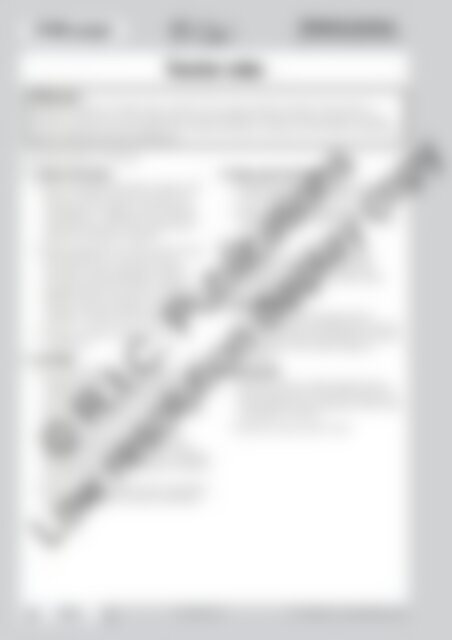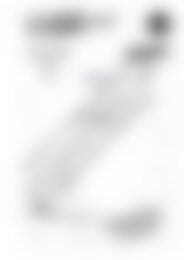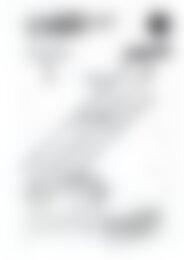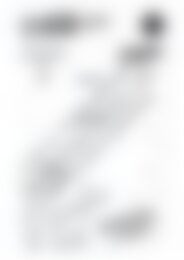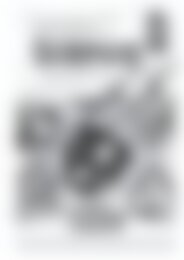6172RB Science a STEM approach Year 2 low res watermark
You also want an ePaper? Increase the reach of your titles
YUMPU automatically turns print PDFs into web optimized ePapers that Google loves.
<strong>STEM</strong> project<br />
Chemical sciences<br />
LIVING IN A MATERIAL WORLD<br />
Teacher notes<br />
<strong>STEM</strong> project:<br />
Students recreate an oil spill using a mixture of oil, cocoa powder and water. They devise a<br />
method to remove the oil from the water by testing different materials to absorb the oil, based<br />
on the properties required. Students then devise a method to remove oil from feathers by testing<br />
different materials to clean the feathers.<br />
Estimated duration: 3–4 weeks<br />
1. Introduce the project<br />
• Play a short Behind the News video to the<br />
class to introduce what an oil spill is, by<br />
clicking on the image at . Students can rewatch the<br />
video by scanning the QR code on their<br />
project brief page on page 69.<br />
• Display page 69 to the class and introduce<br />
the project brief—to remove oil from<br />
the water using an absorbent material,<br />
and remove oil from feathers using an<br />
ingredient that will mix with oil. Students<br />
will first need to recreate an oil spill by<br />
making a mixture of water, oil and cocoa<br />
powder in a plastic tub or large bowl.<br />
• Clarify any details students do not<br />
understand.<br />
2. Investigate<br />
• As a class, explore what absorption is by<br />
looking at the PowerPoint p<strong>res</strong>entation at<br />
. Note: The<br />
last 4 slides don’t need to be viewed as<br />
they relate to a specific investigation of the<br />
absorbency of paper towels.<br />
• In small groups, students brainstorm<br />
materials they think are absorbent and<br />
would like to test. Students then investigate<br />
the absorbency of three materials using the<br />
template on page 71.<br />
• Students also investigate which ingredients<br />
can be mixed with oil, using the template<br />
on page 72.<br />
3. Design, plan and manage<br />
• Students plan how they will recreate an oil<br />
spill and what container will be used.<br />
• Students collect the materials and<br />
substances they will need for the oil cleanup.<br />
4. Create<br />
• Students conduct the oil-absorbing<br />
challenge and the feather-cleaning<br />
challenge, based on the <strong>res</strong>ults of their<br />
earlier investigations.<br />
5. Evaluate and refine<br />
• Students re-read the design brief to<br />
ensure they have included all the required<br />
components and have satisfied the criteria<br />
and checklist. They make changes if<br />
necessary.<br />
6. Communicate<br />
• Students record a video explaining how<br />
they absorbed the oil from the water and<br />
what substance they decided to add to the<br />
oily feather to clean it.<br />
• Share the video with the class.<br />
© R.I.C. Publications<br />
Low <strong>res</strong>olution display copy<br />
68 <strong>Science</strong>: YEAR<br />
978-1-925431-95-7 R.I.C. Publications® – www.ricpublications.com.au<br />
A <strong>STEM</strong> APPROACH<br />
2


